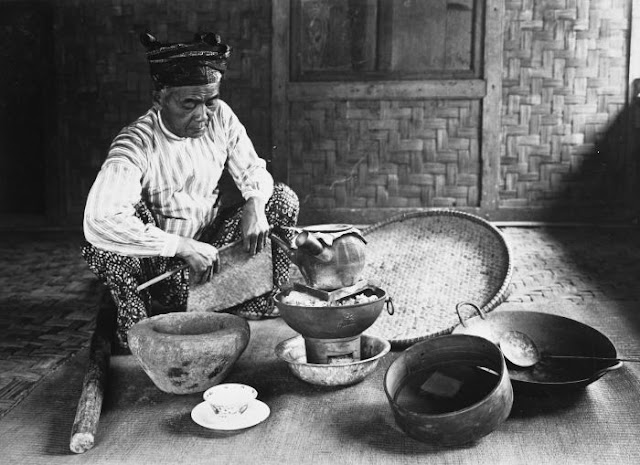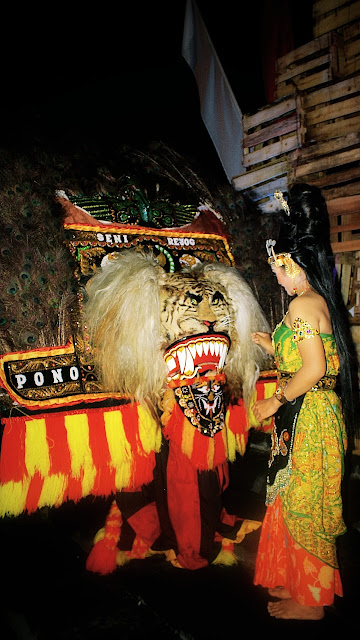Uniqueness of Javanese
As a large country with 17,548 islands, Indonesia is known for its rich culture. This is inseparable from the many tribes that live in Indonesia, which number more than 250 tribes. besides, the fact that Indonesia as an archipelagic country also influences why culture between regions can vary.
One of the largest tribes in Indonesia is the Javanese. Judging from the demography, this tribe inhabits the central and eastern regions of Java. as a large tribe, of course the Javanese also have a large culture, used from generation to generation, and are still found today. What kind of culture is that? Next, we review 6 Javanese cultures which have been passed down to the present.
1. Language
Javanese have a local language called Javanese. Most Javanese people generally use this Javanese language rather than using the national language, Indonesian, to speak. Javanese has different rules in terms of intonation and vocabulary by looking at who is talking and who is the other person. This is usually called the upload term.
2. Trust
in the past, the Javanese people mostly embraced Hinduism, Buddhism, and Kejawen as a handle. Unlike the present, most Javanese people embrace Islam and a small portion adhere to Christianity and Catholicism. Nevertheless, the culture of the past of the Javanese people who were not whole was abandoned because of Kejawen beliefs, which were beliefs generated from Javanese culture, but there were still those who carried on. trust consists of art, culture, traditions, rituals, attitudes and also the philosophy of the Javanese people. Usually this belief is so strongly held by people who are old and generally the generation below it is not many who follow it. despite differing views, this turned out not to cause friction between the old and the young, even the young people tended to respect the old for this problem.
3. Philosophy
Javanese people are also known to be attached to the philosophy of life, especially with what Sunan Kalijogo taught. In their preaching activities, Sunan Kalijogo often uses a traditional approach so that many Javanese follow his teachings. for example, the song Ilir-ilir and Gundul-gundul Pacul is his work which until now has been played down from generation to generation.
The pitutur Sunan Kalijogo also left the life philosophy contained in the Dasa Pitutur which is still being carried out today. the contents of which are urip iku urup, memayu hayuning bawana ambrasta dur hangkara, sura dira jaya jayaningrat melting in the pangastuti's forehead, aggravating without an obstacle to win without ngasorake sekti without aji-aji sugih without bandha, etc.
4. Art
In the field of cultural arts, Javanese people can be said to have a rich diversity of arts. At least this traditional art is divided into 3 groups according to their cultural roots, namely Banyumasan (Ebeg), Central Java and East Java (Ludruk and Reog). for music art, Javanese people have Javanese Langgam which is an adaptation of keoncong music into Javanese traditional music, especially Gamelan.
In addition, the Javanese have a variety of dance arts from various regions, namely Bambangan Cakil Dance from Central Java, Angguk Dance from Yogyakarta, Ebeg Dance from Banyumas, Gandrung Dance from Banyuwangi, Kridhajati Dance from Jepara, Kuda Lumping Dance from Central Java, TariReog from Ponorogo, Remo Dance from East Java, Emprak Dance from Central Java, Menak Golek Dance from Yogyakarta, and Sintren Dance from Central Java.
5. Calendar
One of the Javanese cultural assets not shared by other tribes is the Javanese Calendar. This calendar is a calendar used by the Sultanate of Mataram. when Islam began to develop in the land of Java, Sultan Agung decided to leave the Saka Calendar and replace it with the Hijri Calendar by adjusting Javanese culture. The Javanese calendar is made with a blend of Islamic culture, Hindu-Buddhist culture, and European culture.
In the Java system calendar, the daily cycle used is of two kinds, namely a weekly cycle consisting of 7 days as we know it today (Monday, Tuesday, Wednesday, Thursday, Friday, Saturday, and Sunday) and the week cycle of the warfare consisting of 5 market days(Manis, Pahing, Pon, Wage, and Kliwon).for a matter of months, the Javanese Calendar also has 12 months, namely Sura, Supar, Mulud, Bakda Mulud, Jumadilawal, Jumadilakir, Rajab, Ruwah, Pasa, Sawal, Sela, and Besar.
6. Javanese Counts
Javanese traditional society also has a system of calculations to make important decisions. This calculation system is commonly referred to as Neptu, including the number of days, market days, months and years of Java. Every day, market day, month, and year has different values. From the total calculation value that will be known the merits of the decision to be taken.
Javanese Counts and Image Source This calculation can also be based on the Javanese alphabetical structure (in the future, in the future, if so, it is not true). each script has a different value, for example ha, da, pa, each value is 1 and na, ta, dha, not each value is 2, and so on. Of the total calculations, they will be matched with 5 elements, namely Sri, Lungguh, Gedhong, Loro and Pari. elements of Sri, Lungguh and Gedhong are positive elements, while Loro and Pati are negative elements which are usually avoided by Javanese.
Well, that is the 6 Javanese cultures that are still inherited from generation to generation until we can find them today. although it still exists, it is not impossible with the rapid era of modernization of Javanese culture to be eroded. Therefore, it is the role of the young generation that will determine how the preservation of this culture will be.
One of the largest tribes in Indonesia is the Javanese. Judging from the demography, this tribe inhabits the central and eastern regions of Java. as a large tribe, of course the Javanese also have a large culture, used from generation to generation, and are still found today. What kind of culture is that? Next, we review 6 Javanese cultures which have been passed down to the present.
1. Language
Javanese have a local language called Javanese. Most Javanese people generally use this Javanese language rather than using the national language, Indonesian, to speak. Javanese has different rules in terms of intonation and vocabulary by looking at who is talking and who is the other person. This is usually called the upload term.
2. Trust
in the past, the Javanese people mostly embraced Hinduism, Buddhism, and Kejawen as a handle. Unlike the present, most Javanese people embrace Islam and a small portion adhere to Christianity and Catholicism. Nevertheless, the culture of the past of the Javanese people who were not whole was abandoned because of Kejawen beliefs, which were beliefs generated from Javanese culture, but there were still those who carried on. trust consists of art, culture, traditions, rituals, attitudes and also the philosophy of the Javanese people. Usually this belief is so strongly held by people who are old and generally the generation below it is not many who follow it. despite differing views, this turned out not to cause friction between the old and the young, even the young people tended to respect the old for this problem.
3. Philosophy
Javanese people are also known to be attached to the philosophy of life, especially with what Sunan Kalijogo taught. In their preaching activities, Sunan Kalijogo often uses a traditional approach so that many Javanese follow his teachings. for example, the song Ilir-ilir and Gundul-gundul Pacul is his work which until now has been played down from generation to generation.
The pitutur Sunan Kalijogo also left the life philosophy contained in the Dasa Pitutur which is still being carried out today. the contents of which are urip iku urup, memayu hayuning bawana ambrasta dur hangkara, sura dira jaya jayaningrat melting in the pangastuti's forehead, aggravating without an obstacle to win without ngasorake sekti without aji-aji sugih without bandha, etc.
4. Art
In the field of cultural arts, Javanese people can be said to have a rich diversity of arts. At least this traditional art is divided into 3 groups according to their cultural roots, namely Banyumasan (Ebeg), Central Java and East Java (Ludruk and Reog). for music art, Javanese people have Javanese Langgam which is an adaptation of keoncong music into Javanese traditional music, especially Gamelan.
In addition, the Javanese have a variety of dance arts from various regions, namely Bambangan Cakil Dance from Central Java, Angguk Dance from Yogyakarta, Ebeg Dance from Banyumas, Gandrung Dance from Banyuwangi, Kridhajati Dance from Jepara, Kuda Lumping Dance from Central Java, TariReog from Ponorogo, Remo Dance from East Java, Emprak Dance from Central Java, Menak Golek Dance from Yogyakarta, and Sintren Dance from Central Java.
5. Calendar
One of the Javanese cultural assets not shared by other tribes is the Javanese Calendar. This calendar is a calendar used by the Sultanate of Mataram. when Islam began to develop in the land of Java, Sultan Agung decided to leave the Saka Calendar and replace it with the Hijri Calendar by adjusting Javanese culture. The Javanese calendar is made with a blend of Islamic culture, Hindu-Buddhist culture, and European culture.
In the Java system calendar, the daily cycle used is of two kinds, namely a weekly cycle consisting of 7 days as we know it today (Monday, Tuesday, Wednesday, Thursday, Friday, Saturday, and Sunday) and the week cycle of the warfare consisting of 5 market days(Manis, Pahing, Pon, Wage, and Kliwon).for a matter of months, the Javanese Calendar also has 12 months, namely Sura, Supar, Mulud, Bakda Mulud, Jumadilawal, Jumadilakir, Rajab, Ruwah, Pasa, Sawal, Sela, and Besar.
6. Javanese Counts
Javanese traditional society also has a system of calculations to make important decisions. This calculation system is commonly referred to as Neptu, including the number of days, market days, months and years of Java. Every day, market day, month, and year has different values. From the total calculation value that will be known the merits of the decision to be taken.
Javanese Counts and Image Source This calculation can also be based on the Javanese alphabetical structure (in the future, in the future, if so, it is not true). each script has a different value, for example ha, da, pa, each value is 1 and na, ta, dha, not each value is 2, and so on. Of the total calculations, they will be matched with 5 elements, namely Sri, Lungguh, Gedhong, Loro and Pari. elements of Sri, Lungguh and Gedhong are positive elements, while Loro and Pati are negative elements which are usually avoided by Javanese.
Well, that is the 6 Javanese cultures that are still inherited from generation to generation until we can find them today. although it still exists, it is not impossible with the rapid era of modernization of Javanese culture to be eroded. Therefore, it is the role of the young generation that will determine how the preservation of this culture will be.


